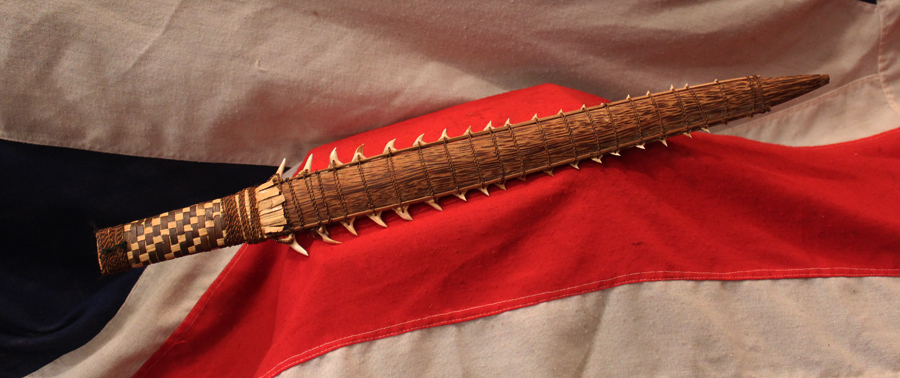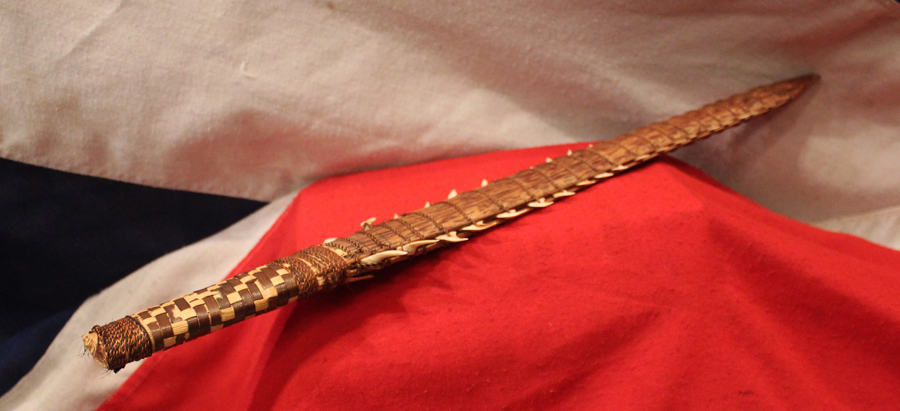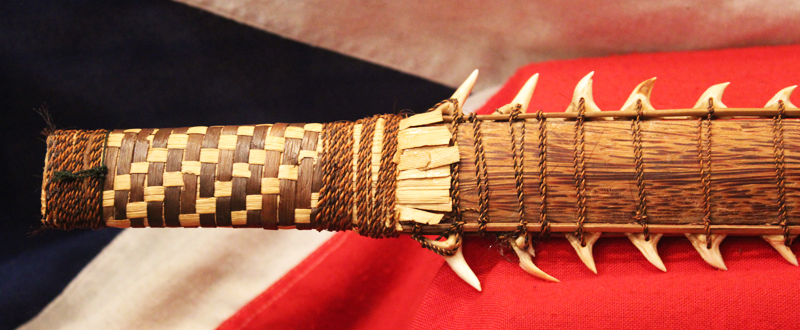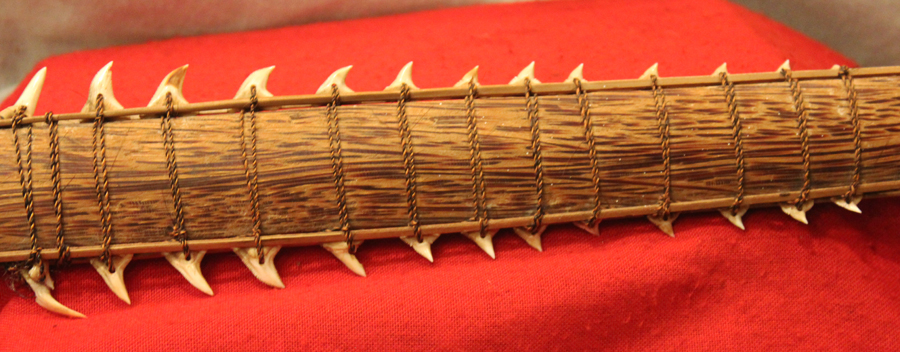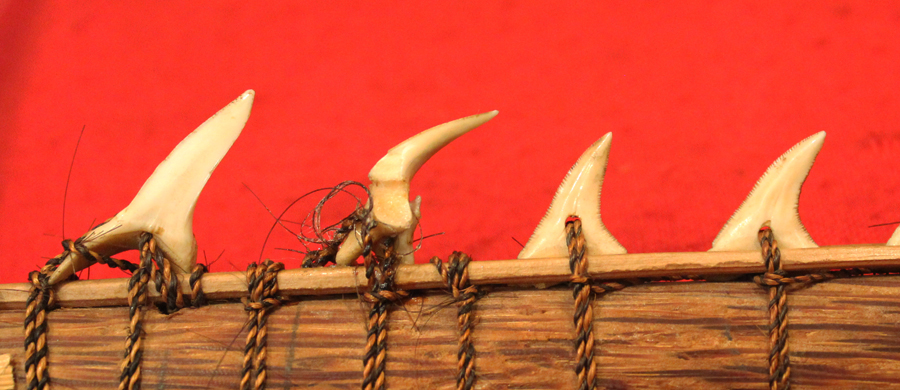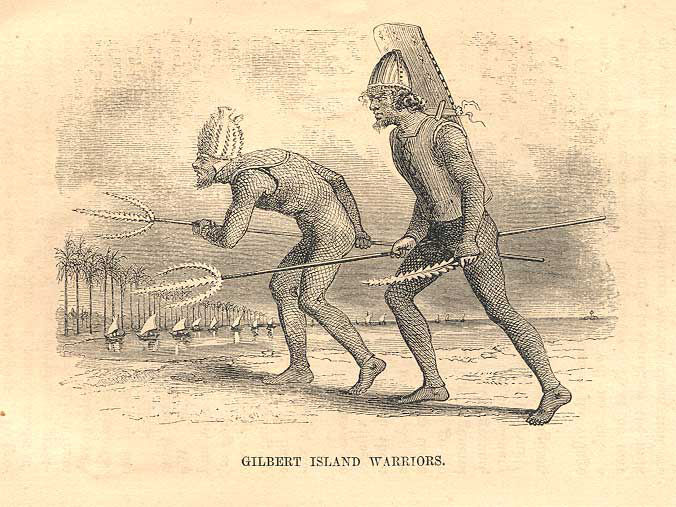A Rare & Incredible Gilbert Islands Shark’s Tooth Kiribati Warriors Sword. In the Native Culture of The Islands It Is Called a Tebute.
A rarely seen {we have only had two in 15 years}, late 19th to early 20th century shark tooth sword, known as a tebute and was unique to the Gilbert Islands of Micronesia, the islands today are known as the nation of Kiribati.
The sword is made from seasoned wood of the coconut palm with cutting edges made from sharks teeth attached with fine fibrous cords. Most of these swords were destroyed by the maritime visitors to the islands. Kiribati has a history of contrived and ritualized duels. The armour was made of thickly woven sennit, a kind of coconut fibre. The duellists wore helmets made of blowfish remains. The helmets were resilient and, due to the structure of blowfish, covered with many points, which had the ability of damaging weapons. The weapons resembled broadswords with a serrated edge created with many shark teeth. The duels were performed mostly for the purpose of settling disputes and maintaining honour. The practicality of the duels is debatable. Due to the difficulty of moving in this armour, falling over and becoming unable to get back up was common enough that duel assistants were required. Kiribati has been known for its traditional martial arts which were kept within the secrets of several families for generations. The Kiribati arts of fighting as opposed to Asian martial arts are not often mentioned or even advertised to be known by the general public. Though, there may be some noticeable parallels in principle to that of Asian martial arts, they are merely really different. For instance, generally, there is no kicking as in Karate kicks or Kung Fu kicks, and speed is more important than power. A list of some of these traditional martial arts is as follows: Nabakai, Nakara, Ruabou, Tabiang, Taborara, Tebania, Temata-aua, Te Rawarawanimon, and Terotauea.
The essence of Kiribati traditional martial arts is the magical power of the spirits of the ancestral warriors. All these martial arts skills share one thing in common. That is, they came from an ancestral spirit.
"Nabakai" is a martial art from the island of Abaiang originated from the person named Nabakai. Nabakai was a member of the crab clan called "Tabukaokao". The three ancestral female spirits of this clan "Nei Tenaotarai", "Nei Temwanai" and "Nei Tereiatabuki" which usually believed to manifest themselves with a female crab came to him and taught him the fighting art. Overall 61 cm long.
Code: 20923
1200.00 GBP

